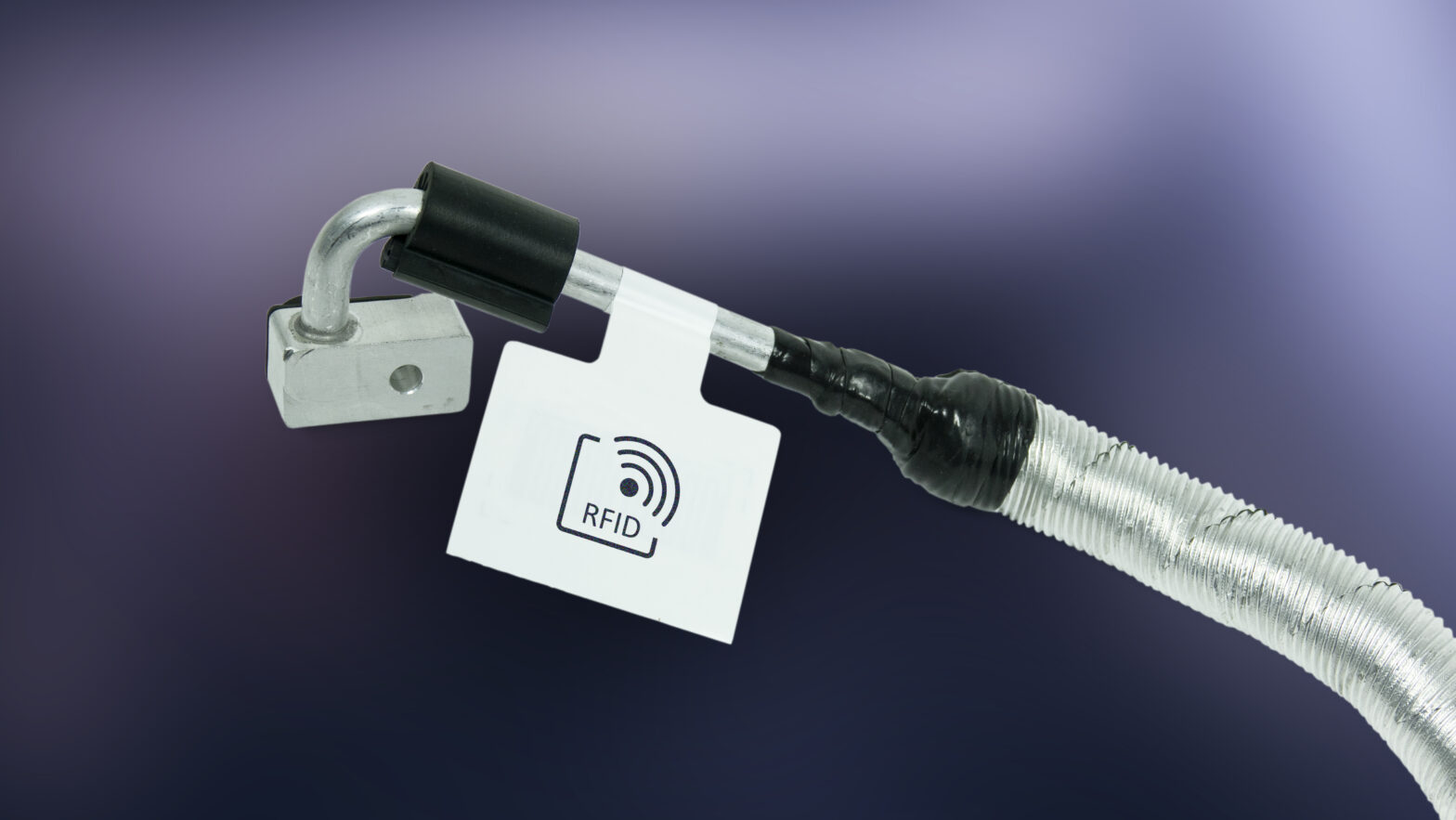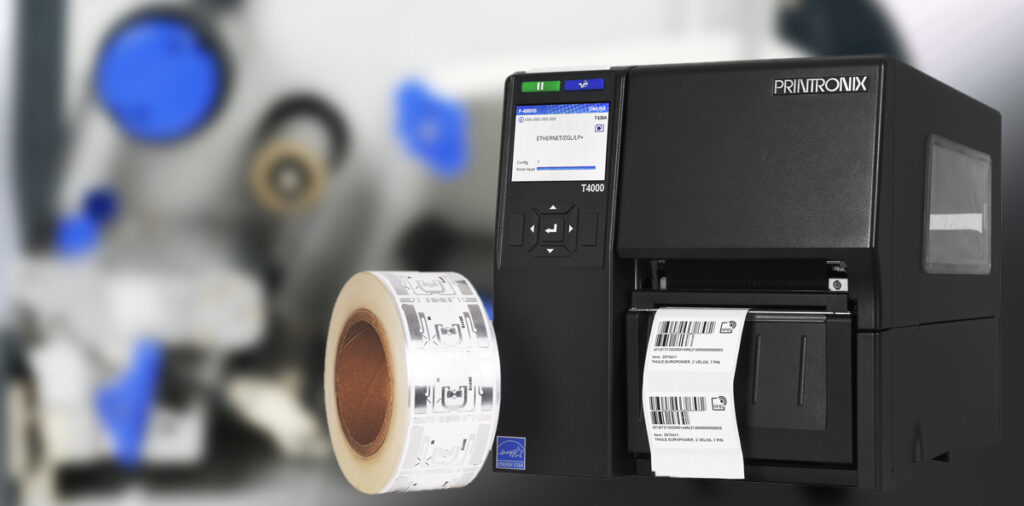
Marking automotive air-conditioning cables with RFID labels
There are several reasons for implementing new solutions in a company. It is frequently the desire to improve existing processes or introduce automation, other times it is the need to eliminate errors. Sometimes these are the requirements of changing regulations or customers’ requirements.
Each time the introduction of changes causes concerns both on the part of persons responsible for the implementation and those who will have direct contact with the new solutions. In the case study below, we describe the implementation – its clue was to mark cables with RFID labels. This branched off into another implementation: how to use RFID tags in the production traceability process
New challenge – marking cables with RFID labels
New solutions, new RFID technologies… Despite the fact that the identification of products using radio waves, as the RFID abbreviation can be loosely translated, has been used for many years, plenty of companies are still waiting for an external impulse to apply it.
Our customer, a large manufacturer of car air-conditioning, faced the need to mark its products with RFID labels at the request of its customer – one of the leaders on the automotive market. And no wonder, since it is in the automotive industry that RFID technology has taken root.
In search of a solution
It seemed that, since the customer had already used labels provided by Etisoft, it would be sufficient to add an RFID tag to them for the customer expectations to be met. Reality turned out to be more complicated.
We analyzed the requirements contained in the specification provided to our customer (concerning, among other things, the type of acceptable tags, required memory, or encoding algorithms) and selected the right RFID tag. The last thing to do was to integrate it with the label and suggest the final product. The cables, which new labels were to be applied to, are made of metal, which, as is well known, poses a certain challenge for RFID technology. Cables differ also in terms of shape and diameter. Our aim was to find a universal solution, possible to apply to each product. We discussed with the customer a few possible variants to prepare samples of the so-called flag labels.
The provided samples were sent to the final customer and after minor corrections suggested by the customer the final label design could be prepared.
Label is not everything
However, the role of Etisoft did not end there. Of course, we were able to provide labels already printed and encoded on the basis of databases we were provided with. However, as it usually happens in the case of production solutions, the customer wanted to print and encode labels himself.
When designing labels, we kept in mind that we could use RFID printers with the most typical printing width, avoiding the need to purchase wide format printers that are more expensive to operate.
We suggested Printronix printers that had been tested by us and many of our customers, which thanks to many configuration options are perfect even for the most complicated solutions. We offered, along with the printers, our own etiGHOST label design and management system that is easy to integrate with the existing software.

Printer tests were successful, and the customer accepted the proposed equipment models. The customer decided to stay with the previously used label printing software. However, due to the rather complicated coding algorithm, he could rely on the support of our Helpdesk both in the configuration of printers and in the preparation of label designs.
The first step is the hardest one
Although it appeared that providing a comprehensive system that would make it possible to meet customer expectations within marking of cables with RFID labels would end our activities in this area, it turned out that… it was the beginning of another implementation.
Successful and efficient RFID label implementation to the final product gave our customer the idea of using RFID tags in the production traceability process.
Label for the second time
The coding requirements were slightly simpler and made it possible to use other chips. The remaining requirements were similar. Moreover, here we faced the need to suggest such a label design that would not only be easy to apply, but also durable and legible at all production stages, and, in addition to that, easily removable after production is completed.
Here, too, we suggested several solutions, leaving it to the customer to decide on the best option. Initially, a solution similar to the previous one was selected with minor corrections.

Hardware and software
This time, apart from labels and more pieces of printers already tested in the previous implementation, the customer asked for further support.
The implemented production traceability system was supposed to collect data on the implementation of further production steps from labels applied to the products. It was important for the data collection process not to extend the operator’s working hours. The standard use of bar codes would make the operator look for the code, place the product with the code in the right position in relation to the reader and hope that the code is of good quality and can be read quickly. The use of RFID technology was sufficient for the product with an RFID label to be placed at the station, and for the system installed there to identify the product itself and send data to the system.
Although we are experienced in the implementation of production traceability systems, this time the integrator who had earlier cooperated with the customer was responsible for this stage. Our role was to suggest hardware and software so that data would reach the customer’s system quickly and easily, and there they would be further processed and visualized.
Clearly specified expectations and openness of all parties working on the solution enabled us to provide the expected solution in a short time. Taking into consideration the number of workstations, we offered the customer a solution that would make it possible to reduce the number of readers, while leaving the RFID antennas at each of the several workstations. Additionally, we equipped each workstation with a system of visual confirmation of reading the correct tag.
Summary
It was possible to successfully finalize both implementations, which does not mean that work on them has been completed. Although everything works in accordance with the assumptions, listening to the operators’ voices, we are already working on further improvements to the labels, which will increase work ergonomics.
The key to success in the case of both implementations seems to be mutual trust and willingness to cooperate throughout the problem-solving process. On the one hand, the customer presented not only a request with complete documentation, but also his expectations and potential concerns regarding the implementation. This enabled us to fully comprehend the challenged we faced. On the other hand, the customer trusts Etisoft as a company with many years of experience in providing RFID solutions and accepted sometimes non-standard solutions. An interesting fact is that mostly due to short deadlines, the implementation of both systems was conducted virtually remotely, without the need to visit the customer’s factory. Of course, later we had an opportunity to check how it works in practice, but efficient communication at the pre-implementation and later stages enabled us to conduct projects in such an unusual way.
Need help? Ask about solution!
